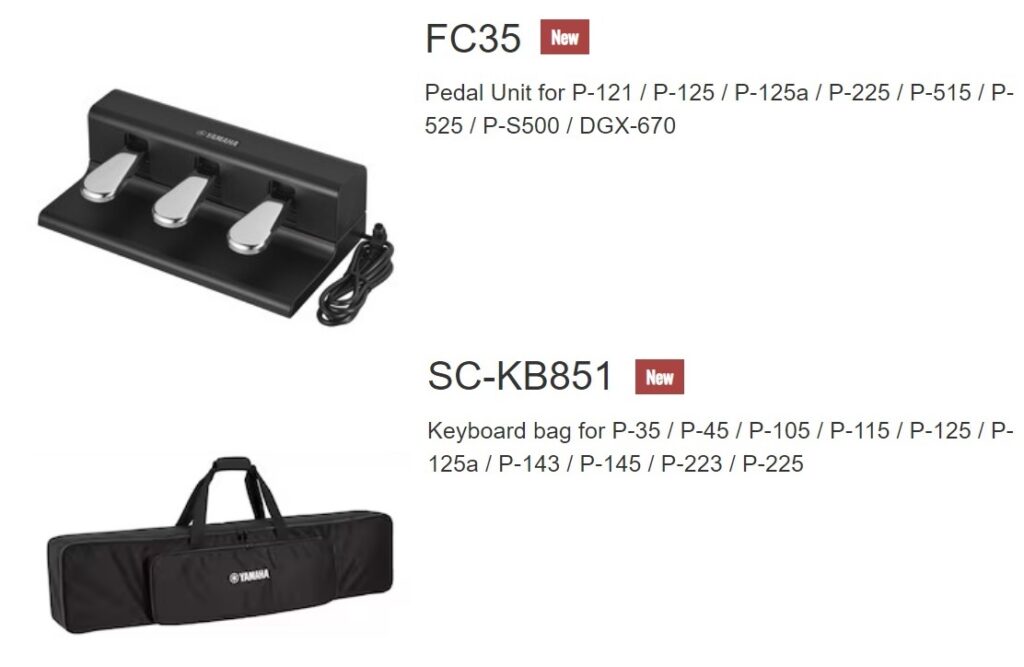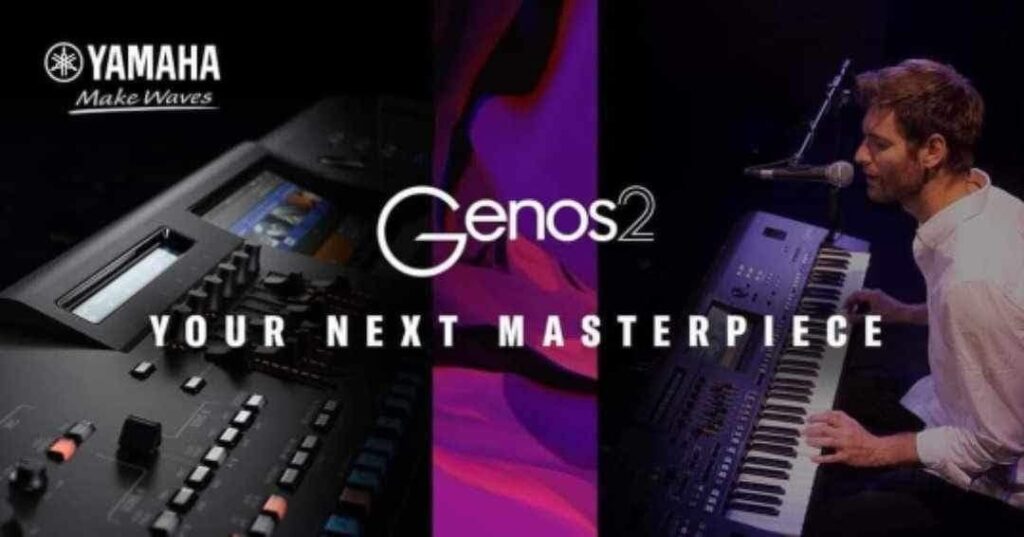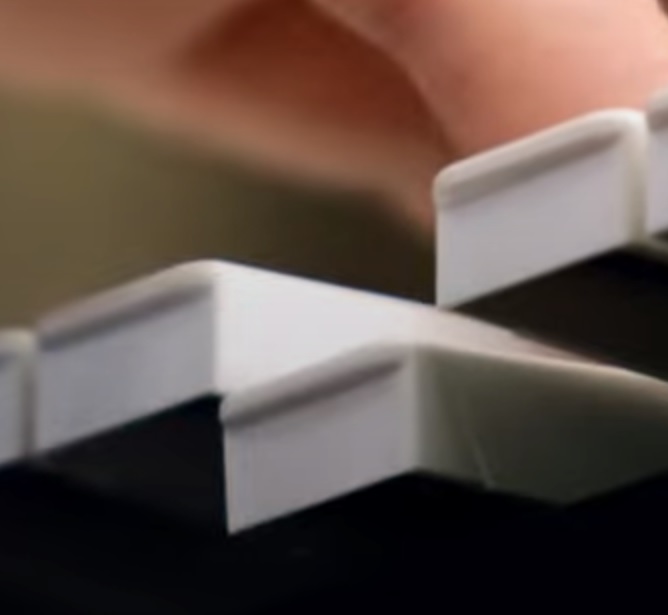Gotta say upfront, I don’t have a horse in the race when it comes to Yamaha Genos2 (to be announced Wednesday). Montage M8x, on the other hand, really seized my attention because it potentially could fit a real need — an 88-key piano for home. All of the Montage M extras (AN-X, big sub display, and so forth) would be gravy on the biscuits. In the end, I placed an order for a Clavinova CSP-170. [Still waiting for delivery.]
I’m quite happy with Genos (generation 1) and will be keeping it. The FSX action is pleasant and, oh, the sounds! It’s set up to my taste and needs — no good reason to change horses.
Still, I’m a technologist and I’m anxious to see how Genos2 features point to the future.
Pianos and more pianos
The Genos (gen 1) acoustic piano voices have always left players wanting, especially when compared to Montage (gen 1) and MODX. Genos has been trapped by its XG synthesis and effects architecture. Voices are limited to 8 elements making 18 element CFX an unlikely creation.
Yamaha engineers found a way to break down the 8 element limit in Montage M. A single part now may have up to 128 elements. If Yamaha incorporates the same breakthrough in Genos2 (G2), deep, detailed acoustic piano voices are possible.
The first G2 teaser video features piano slathered in reverb. I don’t think that’s an accident. Given that the lowly Yamaha DGX-670 has a great sounding CFX, it’s time for G2 to get game.
Piano Room and Smart Pianist
What are new piano voices without Yamaha Piano Room? Piano Room is the place to tweeze and tweak piano sounds to your liking. Open the piano lid, adjust brightness, etc.
Along with Piano Room, we might see Smart Pianist support for Genos2. The tablet-based Smart Pianist app provides the capabilities of Piano Room — and more. You can select voices, change settings and save everything in registrations. On the CSP series, the player can select and control auto-accompaniment styles, too. Smart Pianist brings sophisticated audio-to-chord and audio-to-score capabilities, too. Audio-to-score goes beyond the free Chord Tracker app, converting chords into honest to goodness musical notation. The musician can play from a standard chart without needing to know chord theory.
If Yamaha adds Genos2 to Smart Pianist, Genos2 will be the first (true) arranger keyboard with Smart Pianist support. This is a big deal. First released in January 2018, Smart Pianist is now a central, strategic piece in Yamaha’s digital piano ecosystem. Adding Genos2 will cement Smart Pianists role for years to come.
Whither VRM? Virtual Resonance Modeling enhances relatively static digital piano tones with body and string resonance. VRM has been slowly trickling down from high-end Clavinovas to the portable digital piano line. Will Genos2 get VRM Lite or enhanced VRM? Stay tuned.
What’s this?
Enlarged and enhanced G2 pictures show a new connector (?) centered on the rear panel. Along with new acoustic piano voices, will we see the new FC35 triple foot pedal? The FC35 connects through a large multi-pin DIN connector. Perhaps G2’s new connector is for the triple strike pedal. We shall soon see…
Vegas at night
Rotary encoders are another big ask. The second teaser video reveals what are quite likely rotary encoders in place of standard potentiometers. The encoders are surrounded by LEDs denoting the current knob value.
Later video and pictures show LEDs alongside the G2 sliders. It would be neat if the LEDs would show the initial slider value to be manually “caught.” That capability would certainly make it easier to play the drawbars in so-called Organ Flutes mode.
Speaking of drawbars, did G2 get the VCM rotary speaker DSP algorithm?
Tilt, but not tilt-able
The main and sub displays appear to be the same size as Genos (gen 1). The G2 front panel has a few new controls. Since Yamaha needed to remold the top chassis panel, they decided to increase the tilt of the main and sub displays. This change should improve readability, especially when seated at the instrument.
Space is the place
I give Ton on the PSR Tutorial Forum credit for making a great catch.
The first video is titled “REVelation” and the third video is titled “Real ambience.” Coincidentally, there are Cubase plug-in effects with similar names. The Cubase REVerence plug-in lets you import an impulse response from disk.
These spatial reverbs and enhancements are popular creative tools. They are also memory-hungry. Did Yamaha provide bigger DSP RAM on the G2 SWP70s? Could these effect algorithms be ported to Montage M? Remember, the “Real Distortion” guitar effects appeared in Tyros 5 before that were added to Motif XF in update 1.5. Could history repeat?
A new keybed?
Comparing the G2 chassis form against my Genos (gen 1), it looks like Yamaha have remolded the chassis bottom, too. It looks deeper, possibly to accommodate the downward tilt of the displays. Or maybe a new keybed, replacing FSX.
This close-up picture of the G2 keybed has been nagging me. The front face of the white keys appears taller than the FSX in front of me in the studio. The height-to-width ratio of the pictured key is about 0.52; the height-to-width ratio of an actual FSX key is 0.24. Did Yamaha develop a new keybed for Genos2?
Oh, so much is still unknown!
We can see the keys, the box, and the displays. It’s the stuff inside that we can’t see which is unknown and tantalizing. Until Wednesday! Unless some horrible, awful leak happens. 🙂
Copyright © 2023 Paul J. Drongowski




